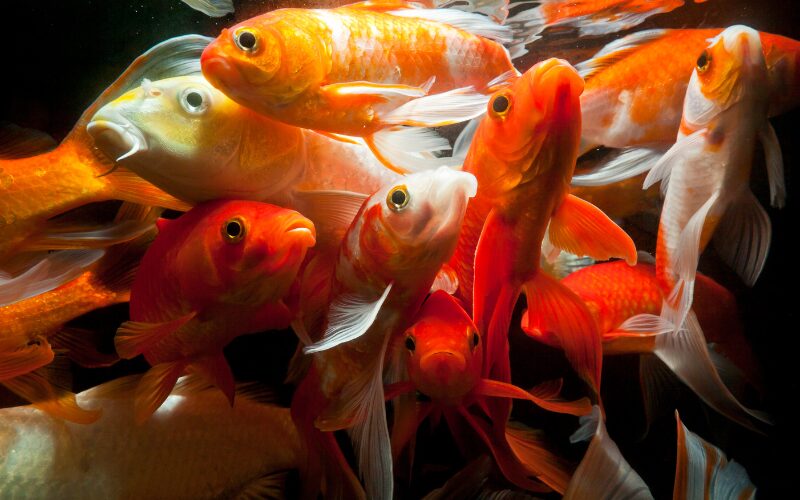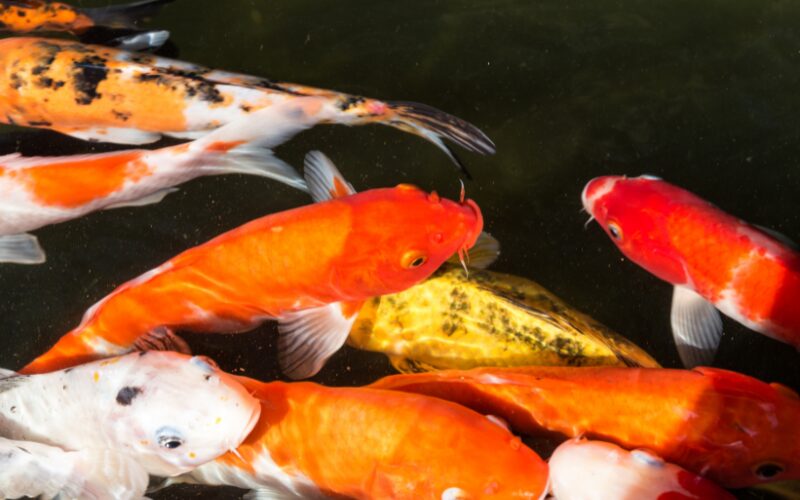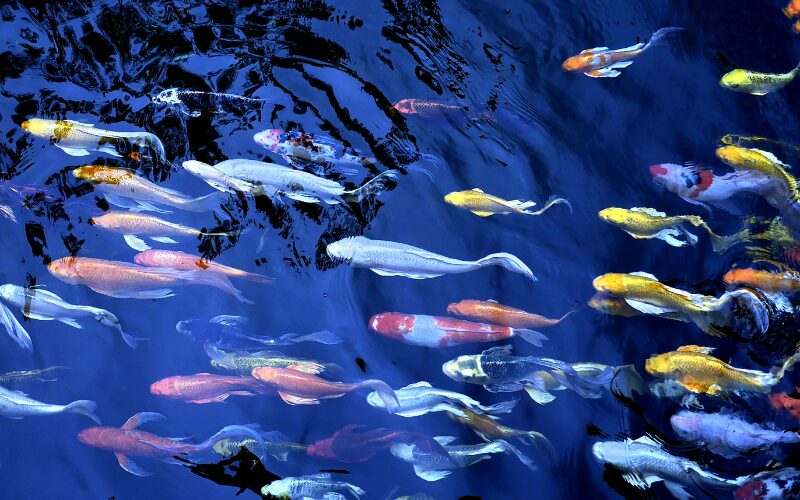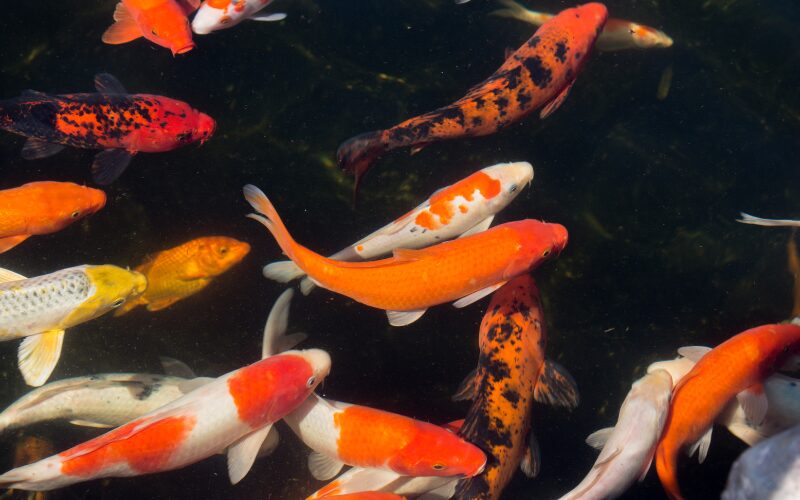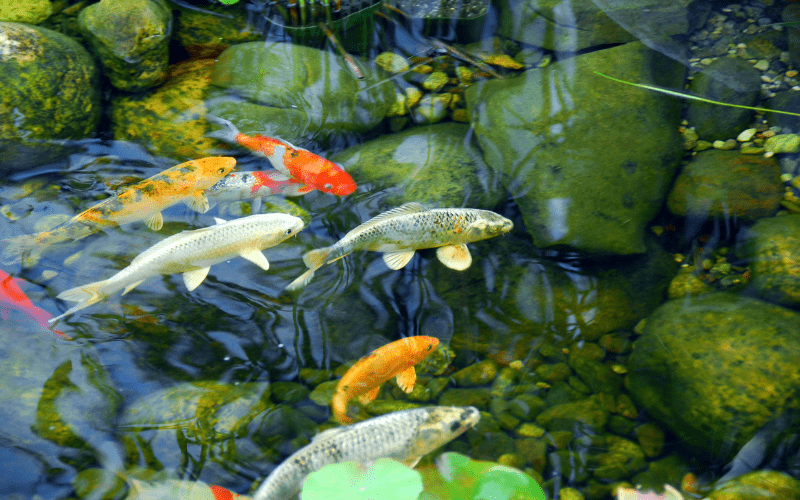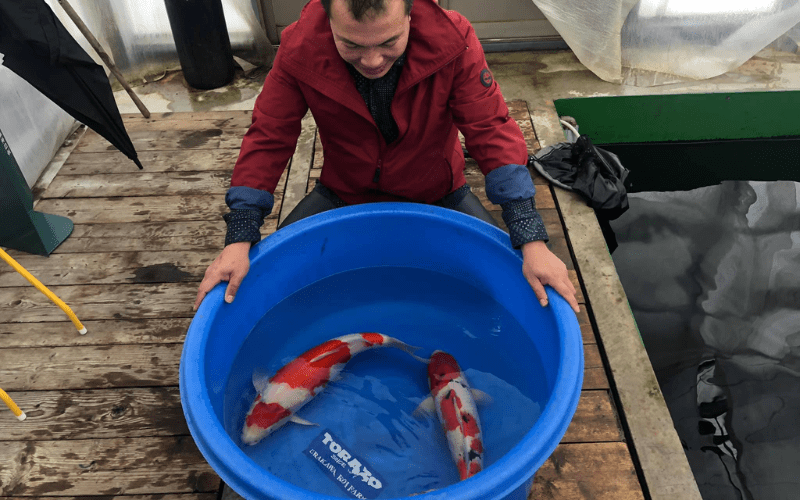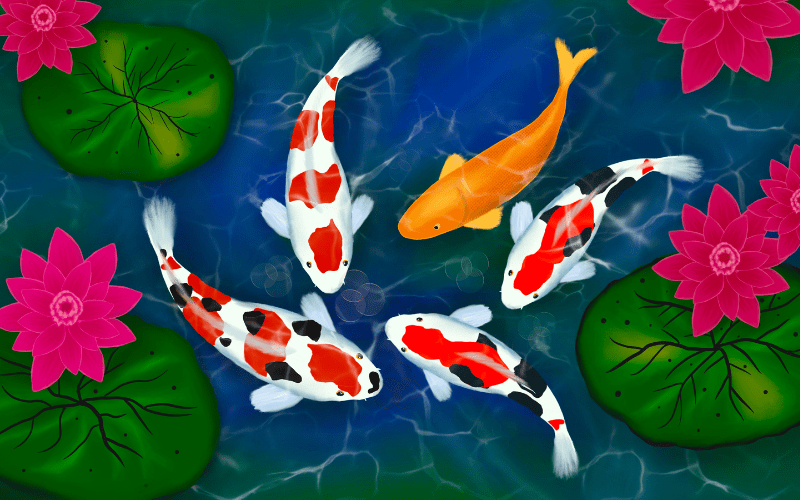Koi fish, celebrated for their beauty and tranquility, are a popular choice for ponds and water gardens. However, just like any other living creature, they are susceptible to various diseases. Understanding these common koi fish diseases and their treatments is essential for maintaining the health and vitality of your aquatic friends. In this blog post, we will explore common koi fish diseases, their symptoms, treatments, and preventive measures to ensure your koi stay healthy and vibrant.
Introduction
Koi fish are a symbol of grace and elegance, and keeping them healthy is crucial for enjoying their beauty and ensuring their well-being. Koi fish can face several health issues due to parasites, bacteria, fungi, viruses, or poor environmental conditions. Early detection and appropriate treatment are key to preventing severe health problems and ensuring a long, healthy life for your koi.
Common Koi Fish Diseases and Treatments
1. Parasitic Infections
Anchor Worms (Lernaea)
- Symptoms: Anchor worms are visible as small, worm-like structures protruding from the fish’s skin. Affected koi may scratch against objects and show red sores around the site of infection.
- Treatment: Treatment involves manual removal of the worms, which can be done with tweezers or specialized tools. Follow up with potassium permanganate or antiparasitic medications to prevent reinfection. Ensuring a clean pond environment is crucial for long-term control.
Ich (White Spot Disease)
- Symptoms: Ich manifests as white, salt-like spots on the body and gills of the koi. Affected fish may exhibit lethargy, clamped fins, and rapid gill movement.
- Treatment: To treat Ich, raise the water temperature gradually to accelerate the life cycle of the parasite, making it more susceptible to treatment. Use salt baths or formalin/malachite green treatments to eliminate the parasite. Maintaining proper water quality is also essential for recovery.
Flukes (Gill and Skin)
- Symptoms: Flukes cause red, inflamed gills, excessive mucus production, and difficulty breathing. Fish may also exhibit flashing behavior.
- Treatment: Praziquantel is an effective treatment for flukes. Formalin baths and salt treatments can also be used. Improving water quality and avoiding overcrowding are crucial to preventing fluke infestations.
2. Bacterial Infections
Ulcer Disease
- Symptoms: Ulcer disease is characterized by open sores or ulcers on the body of the fish, often accompanied by red spots and loss of scales.
- Treatment: Antibiotic treatments such as oxytetracycline can be effective. Improving water quality and isolating infected fish are critical steps in managing the disease. Regular water changes and maintaining a clean pond environment are essential.
Columnaris (Cotton Wool Disease)
- Symptoms: Columnaris are identified by white, cotton-like patches on the skin, fins, or gills. Fish may also show frayed fins and rapid breathing.
- Treatment: Antibiotic treatments like oxytetracycline are effective against Columnaris. Improving water quality and reducing stress on the fish are essential for recovery.
Fin Rot
- Symptoms: Fin rot causes the fins to appear torn, frayed, or disintegrated, with reddened edges.
- Treatment: Antibiotic treatments can help control fin rot. Adding salt baths and improving water conditions will support healing. Ensuring proper pond maintenance and reducing stress will also aid in preventing future outbreaks.
3. Fungal Infections
Saprolegnia (Water Mold)
- Symptoms: Saprolegnia appears as cotton-like growths on the skin, gills, or fins of the fish.
- Treatment: Antifungal treatments such as copper sulfate or formalin can be used to combat Saprolegnia. Improving water quality and reducing stress are important for preventing fungal infections.
4. Viral Infections
Koi Herpes Virus (KHV)
- Symptoms: KHV causes sunken eyes, red patches, and white mottling on the gills. Infected fish may exhibit lethargy and loss of appetite.
- Treatment: There is no cure for KHV. Supportive care, maintaining optimal water quality, and quarantining infected fish are crucial. Preventing stress and maintaining good pond hygiene are essential for minimizing the impact of KHV.
Spring Viremia of Carp (SVC)
- Symptoms: SVC is characterized by swollen abdomens, darkened coloration, and bulging eyes.
- Treatment: Like KHV, SVC has no specific treatment. Supportive care, quarantine, and maintaining optimal water conditions are critical. Ensuring a clean pond environment and minimizing stress will help manage this disease.
5. Environmental and Nutritional Issues
Swim Bladder Disease
- Symptoms: Swim bladder disease causes difficulty in swimming, with fish floating on their side or head down.
- Treatment: Adjusting the koi’s diet, fasting, and feeding peas can help. Ensuring proper water conditions and avoiding overfeeding are important for preventing swim bladder issues.
Poor Water Quality
- Symptoms: Poor water quality leads to general stress, increased susceptibility to diseases, and visible waste in the pond.
- Treatment: Regular water changes, proper filtration, and testing water parameters are essential. Maintaining balanced water conditions helps prevent various health issues and promotes overall koi health.
Preventive Measures
- Quarantine New Fish
- Always quarantine new koi before introducing them to your pond. This helps prevent the introduction of diseases to your existing fish population.
- Regular Water Testing
- Regularly test your pond water for ammonia, nitrite, nitrate, and pH levels. Maintaining optimal water quality is crucial for the health of your koi.
- Maintaining a Clean Environment
- Regular pond cleaning, proper filtration, and avoiding overfeeding are essential for keeping the pond environment healthy.
- Providing a Balanced Diet
- Feed your koi high-quality food and provide variety in their diet. Avoid overfeeding, as excess food can lead to poor water quality and health issues.
Common Koi Fish Diseases and Treatments
| Disease | Symptoms | Treatment |
|---|---|---|
| Anchor Worms | Visible worms, red sores | Manual removal, potassium permanganate, antiparasitic medications |
| Ich (White Spot Disease) | White spots, lethargy, clamped fins | Raise temperature, salt baths, formalin/malachite green treatments |
| Flukes | Red gills, mucus, difficulty breathing | Praziquantel, formalin baths, salt treatments |
| Ulcer Disease | Open sores, red spots, loss of scales | Antibiotics, improved water quality |
| Columnaris | Cotton-like patches, frayed fins | Antibiotics, improved water quality |
| Fin Rot | Torn fins, reddened edges | Antibiotics, salt baths, improved water conditions |
| Saprolegnia | Cotton-like growths | Antifungal treatments, improved water quality |
| Koi Herpes Virus (KHV) | Sunken eyes, red patches | No cure, supportive care, quarantine |
| Spring Viremia of Carp (SVC) | Swollen abdomen, dark coloration | No specific treatment, supportive care |
| Swim Bladder Disease | Difficulty swimming, floating | Diet adjustment, fasting, feeding peas |
| Poor Water Quality | Stress, waste | Regular water changes, proper filtration, testing |
Key Points To Remember
- Early detection and treatment of koi fish diseases are crucial for preventing severe health issues.
- Regular maintenance of pond water quality, cleanliness, and proper feeding practices are essential for koi health.
- Quarantining new fish and maintaining good pond hygiene can prevent the spread of diseases.
- Consult with a professional or aquatic veterinarian for persistent or severe health issues.
FAQs
Q: How do I identify if my koi fish is sick?
A: Look for signs such as unusual behavior, visible sores or growths, changes in color, or difficulty swimming. Monitoring these symptoms closely can help in early detection of diseases.
Q: What are the first steps to take if I notice my koi fish is unwell?
A: Begin by checking the water quality, isolate the affected fish, and consult a professional or use appropriate treatments based on the symptoms observed.
Q: Can koi fish diseases spread to other fish species?
A: Some koi fish diseases can affect other species, especially if they share the same pond or water system. Quarantining new arrivals and maintaining good hygiene can help prevent cross-species transmission.
Q: How often should I test my pond water quality?
A: Test your pond water regularly, at least once a week, to ensure optimal conditions. This helps in the early detection of potential issues and maintaining a healthy environment for your koi.
Q: What are the best practices for introducing new koi fish to my pond?
A: Quarantine new koi for at least two weeks, observe their health, and gradually introduce them to your pond. Ensure the new fish are healthy and acclimate them slowly to avoid stress.
By understanding these common koi fish diseases and their treatments, you can provide better care for your koi and ensure their health and well-being. Regular monitoring, proper pond maintenance, and timely interventions are key to keeping your koi fish happy and healthy.
For personalized advice or treatment options for your koi pond, please contact us today. Our experts are here to help you maintain a healthy and beautiful aquatic environment.

